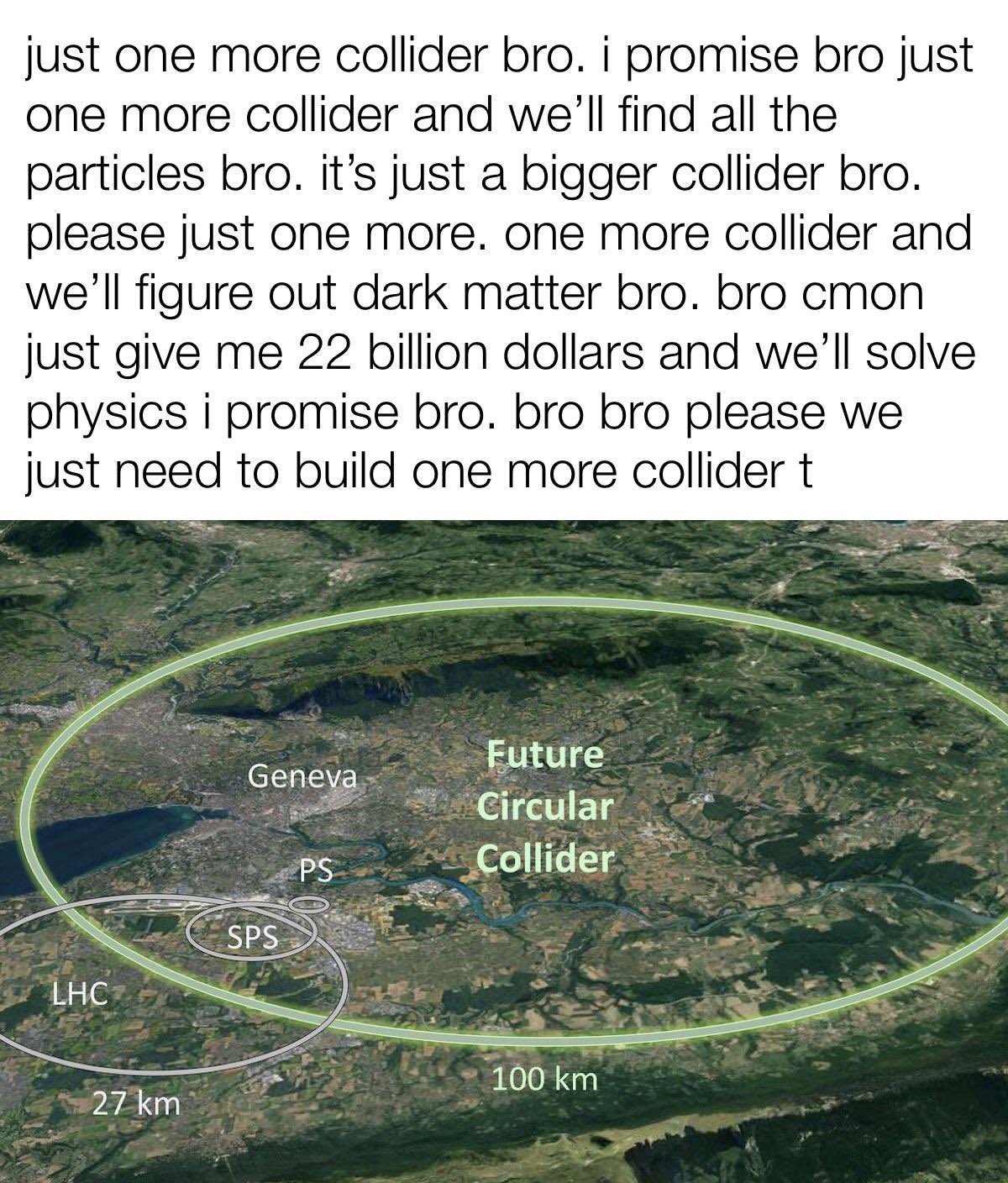this post was submitted on 09 May 2024
1337 points (96.3% liked)
memes
11980 readers
2383 users here now
Community rules
1. Be civil
No trolling, bigotry or other insulting / annoying behaviour
2. No politics
This is non-politics community. For political memes please go to !politicalmemes@lemmy.world
3. No recent reposts
Check for reposts when posting a meme, you can only repost after 1 month
4. No bots
No bots without the express approval of the mods or the admins
5. No Spam/Ads
No advertisements or spam. This is an instance rule and the only way to live.
A collection of some classic Lemmy memes for your enjoyment
Sister communities
- !tenforward@lemmy.world : Star Trek memes, chat and shitposts
- !lemmyshitpost@lemmy.world : Lemmy Shitposts, anything and everything goes.
- !linuxmemes@lemmy.world : Linux themed memes
- !comicstrips@lemmy.world : for those who love comic stories.
founded 2 years ago
MODERATORS
you are viewing a single comment's thread
view the rest of the comments
view the rest of the comments

Don't worry! Though black holes may sound scary, microscopic black holes, the type that could hypothetically be produced by high-energy particle collisions such as this, would pretty much instantaneously (in approximately 10-27 seconds) evaporate due to the emission of Hawking radiation, before they could "suck up" anything. Cosmic rays of far higher intensities than what we could produce routinely collide with atoms in Earth's atmosphere, so microscopic black holes could be happening daily in our atmosphere, we just never see them because they're far too small and evaporate instantly.
Hey you seem pretty knowledgeable so I'm gonna just ask - if these types of events happen regularly in earth's atmosphere, why build particle colliders at all? Is it just to have control over when they're triggered and to be able to observe the results? If so, wouldn't it help to just launch more satellites that can observe when these things happen in the atmosphere? Sorry for the dumb questions, I'm very much a layman.
Yup! It's so they can view what happens when these particles collide as the collisions happen, using specialized detectors. The ATLAS detector at CERN weighs 7,000 tons and is huge.
These reactions in the atmosphere happen very fast and are a bit chaotic. When a primary cosmic ray hits an atom in our atmosphere, it then sets off a chain reaction similar to billiard balls, resulting in "air showers", which are cascades of subatomic particles, such as hadrons, photons, muons, electrons, as well as ionized nuclei. The colliders allow physicists to view these kinds of reactions under controlled conditions right as the reactions happen, and can adjust things such as the energies. There's an array of detectors in Argentina which can detect the particles released by an air shower
Maybe that's what is happening to the ozone layer.